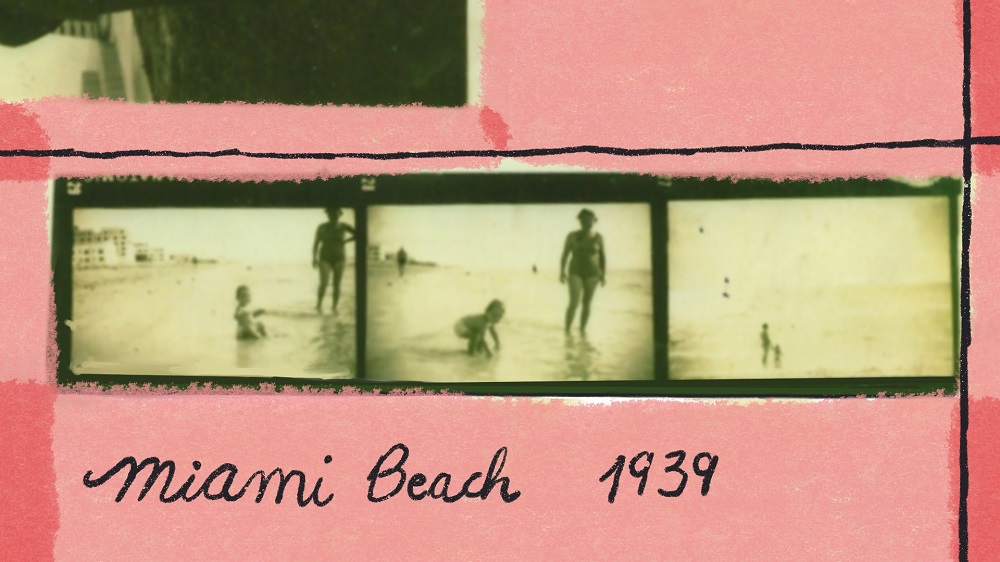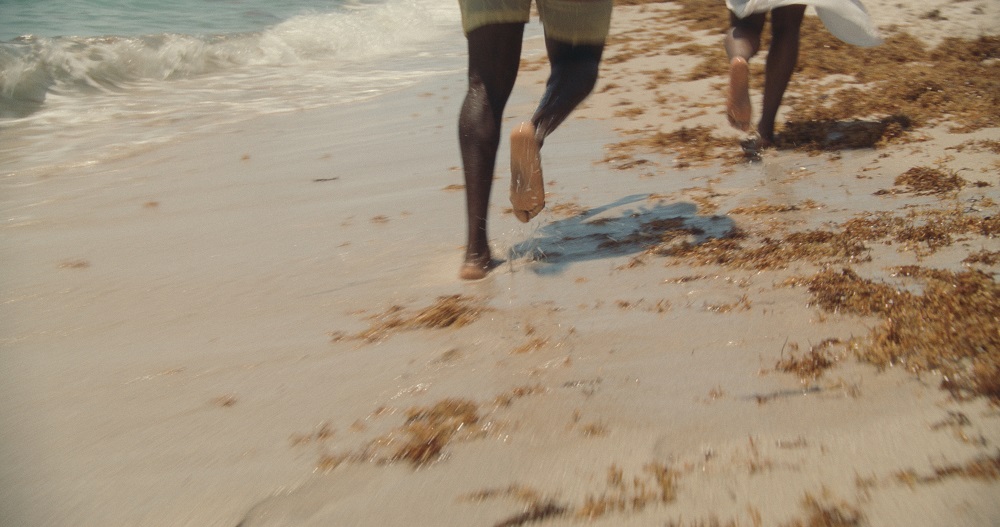Filmmakers Create “Local Love Letters” to Miami Beach Through Oolite Arts, City Funding
Written by TAIMA HERVAS for Artburst Miami


When Karla Caprali, a Miami-based film animator and director, heard about the open call for “Local Love Letters,” she knew she had the perfect story.
Last March, Oolite Arts and the City of Miami Beach awarded nine Miami-based filmmakers $5,000 each to create 3 to 5 minute narrative or documentary film shorts as “Local Love Letters” to Miami Beach.
Caprali’s film, “South of Fifth,” will be one of the films premiering Thursday, Dec. 15, at 7 p.m. in a free screening outdoors on Wallcast at New World Symphony’s SoundScape Park on Miami Beach.
The winning stories share a love for Miami Beach and the special places, compelling moments and local heroes, who make up its very DNA.
Caprali’s love story to Miami Beach uses frame-by-frame, hand-drawn animation, on-camera interviews, and black and white family photos to tell the story of Miami Beach arts pioneer Barbara Gillman.
“When they said it has to be something about Miami Beach, I began to think . . . ‘I do have a perfect story about a girl born in Miami Beach,” Caprali says. “And she’s actually my mother-in-law.”
Caprali says of Gillman: “She’s an art pioneer. She is one of the first gallery owners in Miami, and she was the first who actually brought Andy Warhol to Miami. And she was just this fantastic art connoisseur.”

The Barbara Gillman Gallery featured national and international 20th-century and contemporary artists for 30 years from 1979 to 2008 and Gillman was a strong supporter of the Miami art scene. Gillman continued to represent artists until 2015 from her storage space, which she called the “Museum Vault.” Her shows featured works by Andy Warhol, James Rosenquist, Jim Dine, Christo, Robert Rauschenberg, Picasso, Jasper Johns, and Judith Page, many of whose works remain in her private collection which her family now manages.
The film is also a sensitive living testament for a much-loved mother-in-law as she succumbs to dementia.
Caprali says she also wanted to tell a bigger story. “I’m concerned because Miami unfortunately has this thing of a lack of memory. We are not really so good at memory. If you ask younger people in the arts, “Who is Barbara Gillman? They don’t know.’ They don’t really know about the history of Miami. If you ask somebody, “Did you know that in the ’30s and ’40s the Jewish people we only allowed to live down south of Fifth?” . . . nobody knows that.”
The animation is brought to life with an original jazz score. Caprali says she enlisted Jesse Katz. “He is a very young musician. He just graduated from University of Miami, he has a band, and this is all his original music. Barbara was a jazz lover. She loved jazz.”
The narration for the film is based on a 2013 interview with Gillman by Miami Design Preservation League.
Another film in the premiere is “I Care About Your Mailbox.”
“I think it has what we are calling a hybrid tone of a few things: not a documentary, or narrative film, rather it floats in between. It’s something that we really are proud of,” explains Gimenez.
The film takes the audience on a heartwarming tour through Miami Beach and suburban Miami in search of and appreciation for quirky, imposing, funny, broken and sometimes forgotten mailboxes.
“We are seeing that Miami is really changing a lot right now, and we really wanted to document it before it flashes before our eyes. There are some really beautiful mailboxes we need to capture before they are taken down,” explains Suazo about the idea behind the film.
“I Care About Your Mailbox” has a light comedic touch.
“I think the mailboxes are texture and throughline, but without the people there is no story,” comments Gimenez, who gave kudos to Suazo, who found the mailboxes and encouraged the team to speak with the quirkiest of mailbox owners.
“(Isabella) is good at following the lead of something in the moment. What we realized is that (the mailboxes) are a representation of that neighborhood and its people. People say, ‘. . . I know that mailbox; that’s right by this place where I had my first kiss.’ ”
When asked how the $5,000 award stretched to produce such finely textured film shorts, both Caprali and Gimenez responded that the money was “just enough” to allow for them to get the shorts made.
For Caprali, it paid for the animation software she needed, and the competition was the catalyst that motivated her to make a film to tell a story she had long wanted to get out into the world.

Gimenez says: “$5,000 in filmmaking is usually not that much but in this specific project, it was just enough, mostly because it funded our time…..”
Meanwhile, both filmmakers are also looking for new funding to expand their short films into feature-length films.
The other films premiering include:
“Fire Moon Rising” by Felipe Aguilar: The heartbeat of Miami gets revitalized every full moon, as it illuminates a “secret” Beach Drum Circle.
“It Had to Be You” by Juan Barquin and Trae DeLellis: A couple reminisces on the wild night on South Beach that kicked off their ten-year relationship.
“Toxic Beach” by Abhi Chatterjee-Dutt: Flags flying on lifeguard towers warning swimmers about the tide are used as a metaphor to explore all that is to love about Miami Beach.
“How to make a movie in Miami” by Carla Jerez: A local filmmaker explains how to make a Miami movie in this surrealist desktop documentary.
“La Vie” by Al’lkens Plancher: Three periods of a Haitian couple’s life intertwined together at the shore of North Miami Beach.
“Letter From the Age of Ecocide” by Shireen Rahimi: A woman thrives in her beloved underwater home when suddenly, the natural beauty around her begins to decay. A wise sage narrates her grieving process from another dimension, using the ancient poetry of her ancestors to reveal a universal story of radical acceptance.
“Loveboat Takeout” by Melanie Wu: An experimental docu-fiction short about an immigrant family’s former business, a Chinese restaurant in Miami.
WHAT: “Love Letters to Miami Beach”
WHERE: New World Center SoundScape Park, 500 17th St., Miami Beach
WHEN: 7 to 9 p.m., Thursday, Dec. 15
COST: Free; RSVP recommended.
INFORMATION: oolitearts.org
ArtburstMiami.com is a nonprofit source of dance, visual arts, music and performing arts news. Sign up for our newsletter and never miss a story.


Artburst is a multimedia platfrom covering arts in Miami-Dade. Artburst works with some of the best art journalists in South Florida writing reviews, features and articles covering our vibrant cultural community. We partner with some of the top video producers to create multi-media content. Make Artburst your one stop source for dance, music, theater and independent film coverage. In addition we promote the arts and arts journalism through social media. The arts are a major force in Miami-Dade with an economic impact of 1.4 billion dollars. Over 16 million people attended an arts event, museum or performance last year. With over 1,000 arts organizations the opportunities for endless. Follow us @artburstmiami to get all the inside scoop and engage with our dynamic arts ecosystem.
Artburst is a program of the Arts & Business Council of Miami with the support of the Miami-Dade County Department of Cultural Affairs and the Cultural Affairs Council, the Miami-Dade County Mayor and Board of County Commissioners.


